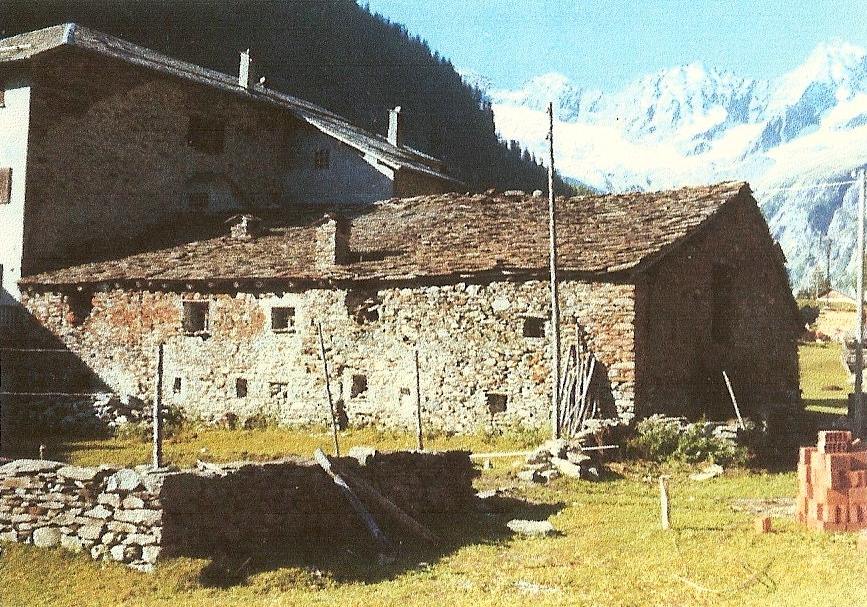 Inn in Chiareggio. Side view.
Inn in Chiareggio. Side view.
The inn complex consisted of several buidlings joined together, used as stables and stores of various kinds.
Next to it there was also a large vegetable garden, a tégia, a chalet used for the production of milk and cheese and a "courtyard", consisting of grazing land adjoining the buildings.
The rental deeds for the inn give us an interesting insight as regards the right of ownership of the inn.
There was, in fact, a clear distinction between the owner of the building, referred to as the "host of Chiareggio',and the innkeeper or manager.
Although the owner was named "host", he never ran the inn directly and usually belonged to an affluent family, such as the Chiesa family, who owned it for several centuries, but who followed other professions, such as that of notary.
The innkeeper, who could have been called "host", was the person who rented the inn and who lived there.
The rental contract also envisaged a commitment to raise and graze a certain number of cattle, usually fourteen cows and one bull, owned by the lessor.
The inn consisted of a sort of small, almost self-sufficient home industry, if we bear in mind the food products were ensured by the innkeeper's own work, such as the milk and other dairy products.
The meat and hides waere also produced on site, whereas other kinds of meat were also guaranteed by raising courtyard animals.
The vegetable garden enabled them to grow their own vegetables, whereas the meadows provided forage for the cattle and for the pack horses, which stopped over with the travelling merchants.
Other food products and various objects and utensils for the inn had to be transported to Chiareggio from the bottom of the valley: these included flour, salt, wine, hardwear, candles, explosive charges, sheets and blankets, wooden and pottery plates and dishes, and
"laveggi" (soapstone pots).
Whereas the work of a cattle breeder required a constant presence in Chiareggio from early spring through to autumn, the work of the innkeeper began later in the first summer month, and lasted until the end of October, if the season was good.
We don't know how many travellers passed through each year along the road of the Muretto pass and who used the inn in Chiareggio as a place to rest and stop over.
However, we can calculate that approximately 10,000 packhorses carrying wine passed along that road every year.
Wherever the merchants were going, the inn in Chiareggio was a mandatory stop, not just to get food and drink before setting out again, but also to stay even for several days whenever the weather prevented them from reaching the pass, given the risk of storms or blizzards.
This inn must also have been used as a place to stop and meet by the shepherds, who spent the summer months with their animals on the high pastures above the valley.
Last but not least, it was used as a place of rescue to take any wounded from the frequent accidents which took place, due not only to roads collapsing, storms and landslides, but also to accidental encounters with bears and wolves and, on occasions, even with brigands.
Bibliography
-
Annibale Masa – Giovanni De Simoni,
Inventario dei toponimi valtellinesi e valchiavennaschi. 8 Territorio comunale di Chiesa in Valmalenco, Società Storica Valtellinese, Sondrio
1976
-
Giancarlo Corbellini,
Vicende dell'insediamento umano in Valmalenco,
Degree thesis, University of Milan, academic year 1968-69
-
Giancarlo Corbellini,
Fra Valtellina ed Engadina. Natura Cultura Escursioni,
Bologna, Zanichelli 1987
-
Saveria Masa,
L’osteria di Chiareggio, in
“Bollettino della Società Storica Valtellinese”,
No. 46.1993, pp. 95-114
-
Saveria Masa,
La “strada cavallera” del Muretto (Valmalenco: transito e commerci su una via retica fra Valtellina e Grigioni in epoca moderna,
Degree thesis, University of Milan, academic year 1992-93